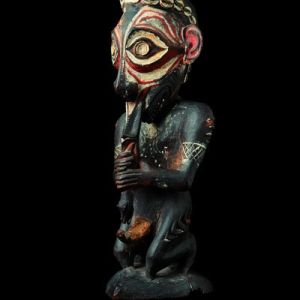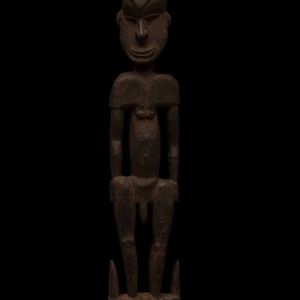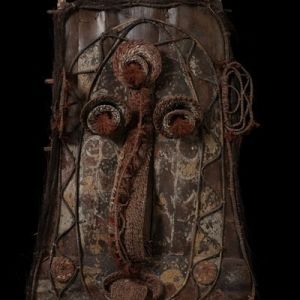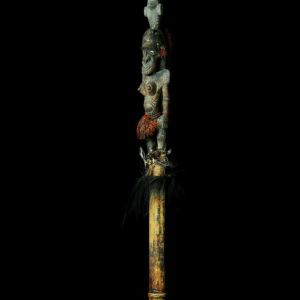HELENEUM – LUGANO
Wagan, Art and Music of the Sepik presents 46 works from New Guinea that were collected in the field, or purchased from intermediaries, over a time period from the late 19th to the mid-20th century. On the path of discovery of the works on display, the common thread is the idea that in a simple culture ‘everything matters’. Art, myth, literature, music and dance are part of the ritual and social organisation, in an organism concept that allowed individuals to live in deep harmony with their environment and history. The decoration, sculpted and painted, recalls human and animal forms representing ancestors and protective spirits: the vibrations and sounds emitted by flutes and drums are considered the very voice of the spirits, omnipresent in ceremonial contexts as in everyday life. They played an important role in the culture of the Sepik peoples and were the object of great attention. Their main function was to emit vibrations and melodies that altered the common sound perception of the environment. Their sound was necessary for the manifestation of the virtual universes of ritual on Earth. The works come from the Brignoni Collection of MUSEC, the Schäfer Collection of the Lombardy Region on deposit at the Musei Civici di Como (MCC), the Musée d’Ethnographie in Geneva (MEG), the Dinz Rialto Collection of the Museo degli Sguardi in Rimini (MSR) and a private collection in Rovigo, formerly the Hruska Collection.
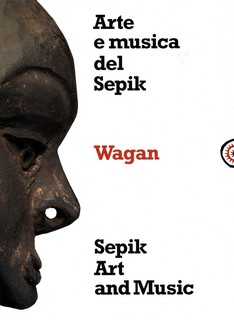
Wagan is a polysemic term that played a very important role in the classification system of the people of the mid-Sepik Valley: it was the name of the ancestral spirit of the clans when it possessed the shaman and spoke through him, and thus, by analogy, it was also the name of the shaman himself; it was the spirit that listened to the prayers of men, and it was the great slit drum whose rhythmic ‘voice’ was even credited as a being gifted with an independent will. Often the great slit drum was associated with the canoe, to which it closely resembles in form, and as related to the idea of a generating force, the wagan were connected to water and were invoked in several ceremonies that had to do with the periodic renewal of things. Also personifying the wagan were the ceremonial seats called tekets, around which the assembly of elders gathered to record genealogies and make the most important decisions affecting the community. Also linked to the ideological complex of the wagan were the so-called ‘hooks’, sculptures that were secured to a beam in the house and dangled freely from the ceiling to hang objects of distinction belonging to members of the clan. The larger hooks depicted entities of great mythical and cultural significance and were objects of particular veneration.
The exhibition cycle Altrarti is dedicated to a monographic investigation of the complexity of the values of a particular expression of art and culture. Starting from the reading of its form through to the analysis of its meaning, its value and the context in which it operates, the work of ethnic art is studied from as many points of view as possible.


